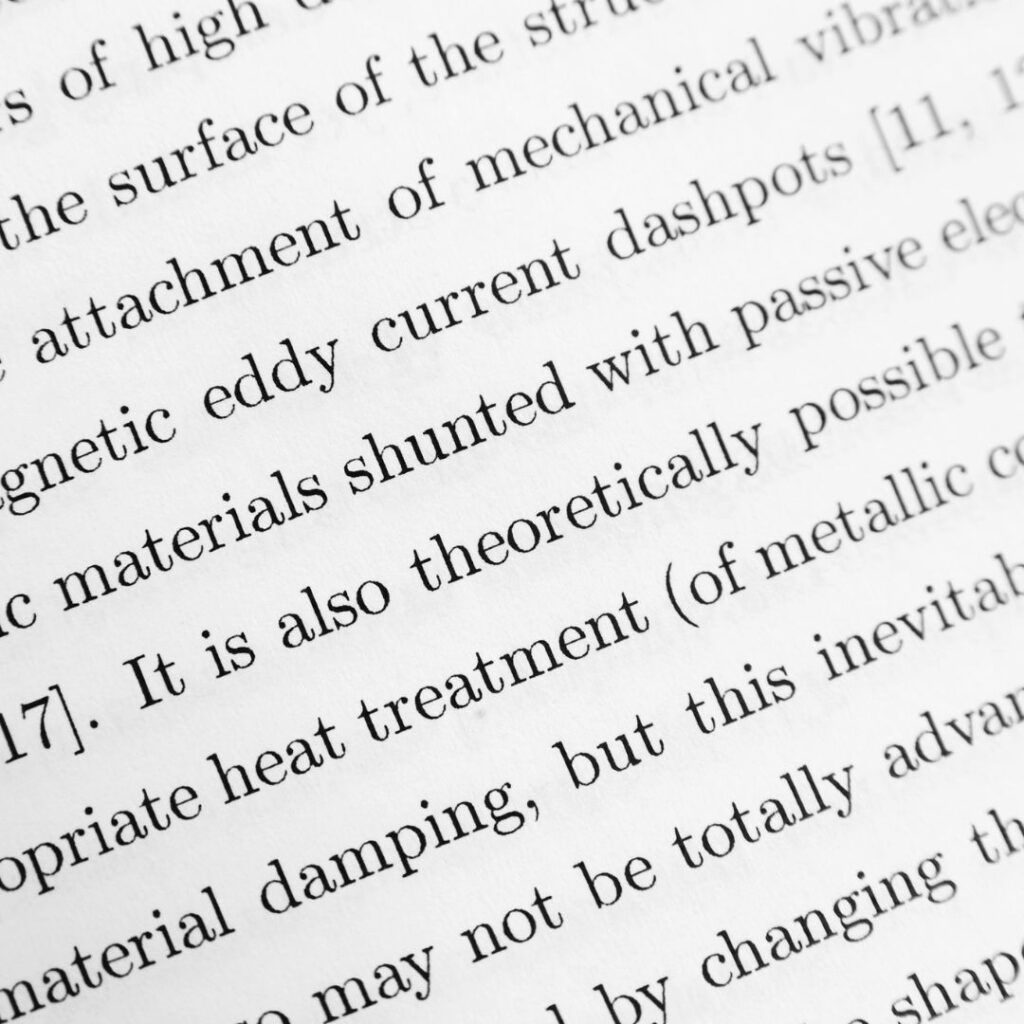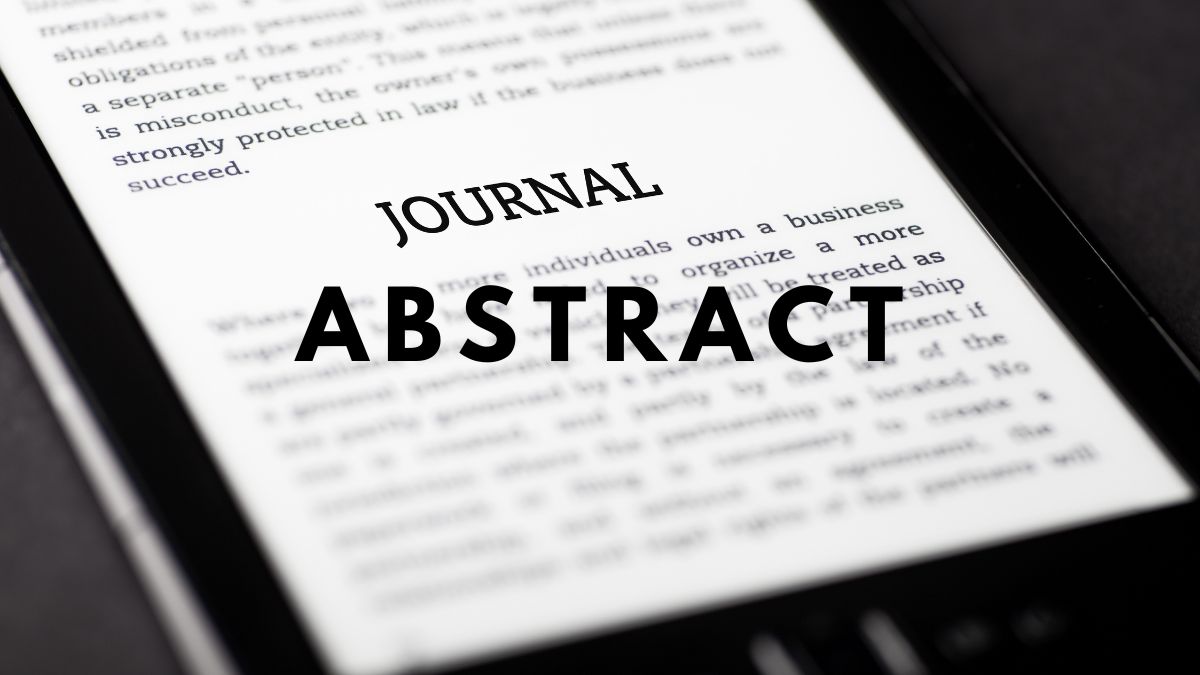Table of Contents
- Introduction
- Understanding Journal Abstract
- Common Mistakes in Journal Abstracts
- The Impact of These Abstract Mistakes on Your Research
- 6 Tips for Avoiding Common Mistakes in a Journal Abstract
- Conclusion
Introduction
This article discusses seven common mistakes in a journal abstract that can hinder you from publishing in reputable journals. If you dream of publishing in high-impact journals such as Nature, Science, etc., avoiding these blunders is necessary.
A well-crafted journal abstract is crucial for effectively communicating your research and increasing its chances of publication. However, many researchers struggle with writing clear, concise, and compelling abstracts. Common mistakes can easily diminish the impact of your study by turning off journal editors and reviewers, and you end up with a rejection.

This introductory section will briefly highlight the authors’ most frequent mistakes when drafting journal abstracts. Awareness of these pitfalls is the first step toward avoiding them and crafting an abstract that accurately conveys the key details of your work.
Some of the most prevalent issues we see include being overly vague, using jargon, improperly structuring the abstract, and more. Making these mistakes can obstruct the readability and comprehension of your research, potentially leading to rejection.
Throughout this article, we will explore these common journal abstract writing mistakes more deeply. We’ll look at real-world examples of how they manifest, examine why they can be problematic, and provide tips to dodge these hazards in your abstract.
You can avoid the typical blunders that snag authors with some knowledge and forethought. Mastering journal abstract writing takes practice, but avoiding the most common errors will get you on the right track. Read on to enhance your abstract and boost your publication prospects.
Understanding Journal Abstract
A journal abstract summarizes a research paper published in an academic journal. Its main purpose is to give readers a quick overview of the study and its key findings. Abstracts allow readers to quickly determine if the full paper is relevant to their research interests before committing time to read the entire paper.
The abstract is often the first and sometimes the only part of a paper that gets read. Many journal databases and search engines also index and display abstracts to help users find relevant papers. Therefore, a well-written abstract is critical for effectively disseminating your research and attracting citations.
However, a poorly written abstract can negatively impact your research’s perception and limit its reach. An unclear or disorganized abstract may lead readers to assume the underlying research is unclear or low quality. Using too much jargon or failing to highlight key findings could result in readers passing over your paper.
In addition, many conference organizers and journal editors will use the abstract to determine if your full paper should be accepted for presentation or publication. A poorly constructed abstract increases the chances of your submission being rejected before the merits of the full paper are considered.
In summary, the abstract serves as the first impression of your work. Putting effort into crafting a clear, concise, and compelling abstract will pay dividends by effectively showcasing your research to the academic community.
Common Mistakes in Journal Abstracts
Writing an effective journal abstract is a skill that takes practice and attention to detail. Unfortunately, many authors make easily avoidable mistakes in their abstracts that can negatively impact how their research is received. This section will review some of the most common blunders seen in journal abstracts and discuss why they should be avoided.

1. Being Too Vague
One of the most frequent errors is writing an abstract that is too vague or general. The abstract should convey your study’s core focus, findings, and implications. Being overly broad or omitting key details will leave readers confused about what your research is truly about. For example, an abstract stating, “This study investigates the relationship between A and B,” lacks crucial specifics about the research design, sample, variables examined, and conclusions drawn.
2. Using Jargon and Technical Terms
While some discipline-specific terms may be unavoidable, filling your abstract with technical jargon or acronyms can make it difficult for a general audience to comprehend. Researchers outside your narrow field also need to understand the abstract. Always use plain language whenever possible and limit jargon to only widely known terms.
For instance, an abstract full of highly technical phrasing and abbreviations like “The ANOVA revealed significant effects of the IV on the DV (p < .05)” will turn off readers.
3. Inappropriate Length
Abstract length requirements vary across journals, but authors commonly go to extremes. An overly short abstract risks leaving out key details, while an overly long one includes irrelevant information and loses the reader’s interest. Adhere closely to the given word count limits and avoid including trivial details to fill space. The key is to be concise yet comprehensive when summarizing your study. Typically, a journal allows you to write around 150-250 words of abstract.
4. Incomplete Information
Crucial components like the research aims, methods, results, and conclusions should never be missing from an abstract. Unfortunately, authors sometimes make the mistake of only highlighting the study background and omitting the actual findings. Make sure to cover all important aspects of your research in a balanced way so readers fully understand what was done and discovered.
5. Language Issue
Poor language is a common mistake in a journal abstract because it can severely hinder the comprehension and accessibility of the research. This issue arises when authors use complex sentence structures, ambiguous terms, or incorrect grammar and punctuation. A poorly written abstract can confuse readers, making it difficult for them to grasp the essence of the study.
Furthermore, if the language used is not clear and concise, it may lead to misinterpretation of the research findings. In addition, abstracts with poor language quality may give an impression of unprofessionalism, causing readers, including potential reviewers and editors, to question the credibility and rigor of the research itself. I have encountered many cases where the editors-in-chief decided to reject journal manuscripts after reading only the abstract due to poor language. Thus, ensuring clarity, simplicity, and correctness in language is vital in writing an effective journal abstract.
6. Lack of Keywords
The absence of relevant keywords in a journal abstract is another common mistake that can significantly impact the visibility and discoverability of your research. Keywords are crucial in search engine optimization (SEO) for academic databases and search engines. They help these platforms categorize and match your work with potential readers’ search queries.
If your abstract lacks appropriate keywords, your paper may not appear in the search results when researchers look for studies related to your topic. This means that even if your research is groundbreaking and highly relevant, it might go unnoticed because it’s not appearing in searches.
7. Making Unsubstantiated Claims
Making unsubstantiated claims is a major mistake in a journal abstract. This occurs when authors make broad, sweeping statements or conclusions unsupported by the research data in their paper. An abstract filled with such claims can mislead readers and create false expectations about the content of the study.
For instance, if an author writes, “Our research conclusively proves that treatment X completely eradicates disease Y,” but the study only shows a correlation or partial evidence, this is an unsubstantiated claim. Such a statement may attract initial interest, but the reader will quickly realize that the claim is overstated or unsupported upon reading the full paper. This discrepancy can lead to disappointment and loss of credibility.
By being mindful of these common pitfalls, authors can write journal abstracts that accurately showcase their research to readers. Paying attention to clarity, brevity, completeness, and approachability makes all the difference.
The Impact of These Abstract Mistakes on Your Research
A poorly written abstract can significantly negatively impact how your research is received and evaluated. Here are some of the key ways these common blunders can affect your work:
Reduced Readability and Comprehension
When your abstract contains vague descriptions, jargon, acronyms without explanation, or unnecessary details, it becomes challenging for readers to grasp your key findings and conclusions quickly. This lack of clarity disrupts the reading flow and causes confusion, which may lead reviewers and editors to dismiss your research outright.
Misrepresentation of Your Work
An unclear or poorly structured abstract often fails to convey the crux of your research accurately. Readers may misinterpret your work without a concise summary of your aims, methods, results, and implications. This distorts your research and damages your credibility.
Lower Chance of Acceptance
Since your abstract is often the first and only part of your paper read by editors and reviewers, errors here can directly hurt your chances of publication. Studies show papers with unclear abstracts have lower acceptance rates. Fixing these blunders can significantly boost your odds.
Limited Dissemination and Impact
Even if published, your paper’s poor abstract may deter researchers from reading further. This greatly limits the dissemination and potential impact of your work. A well-written abstract, on the other hand, can intrigue readers and increase citations.
In summary, avoiding abstract blunders is crucial for accurately conveying your research and improving publication outcomes. A clear, concise, compelling abstract can make or break your paper’s reception.
6 Tips for Avoiding Common Mistakes in a Journal Abstract
Here are some practical tips to help you avoid the common mistakes in a journal abstract, as outlined in the previous discussion.
1. Read and Follow the Target Journal’s Guidelines
Different journals have specific requirements and word limits for abstracts. Always read the author’s guidelines carefully before drafting your abstract to ensure you meet the journal’s expectations.
2. Be Concise Yet Informative
Aim for an abstract between 150-250 words. Summarize key information but avoid excessive detail. Use clear and direct language to convey your main findings.
3. Avoid Using Jargon and Undefined Abbreviations
Write for a broad audience. Spell out abbreviations on first use and limit technical jargon. Ensure your main points are clear to readers outside your field.
4. Accurately Reflect Your Study’s Purpose and Findings
Clearly state your research aims, methods, key results, and conclusions. Do not exaggerate findings or make unsupported claims. Your abstract should accurately represent your full paper.
5. Carefully Proofread and Revise
Check for spelling, grammar, clarity, structure, and adherence to journal guidelines. Proofread your abstract repeatedly. Ask colleagues to review your abstract and provide feedback before submission.
6. Use Active Voice and Strong Verbs
Active voice and action verbs make your abstract more engaging. A passive voice can make your writing wordy and unclear.
Conclusion
A well-written abstract is crucial for accurately conveying your research and improving publication outcomes. It can help readers understand your study’s aims, methods, results, and implications.
Avoiding common mistakes in a journal abstract, such as being unclear or using excessive jargon, can increase the chances of acceptance and the dissemination and impact of your work. By following the tips outlined above, you can create a concise, informative, and compelling abstract that accurately represents your research and increases the likelihood of publication success.
